1. Stimulants is now the number one soft drinks segment in convenience
2. Thirty-nine per cent of energy drinks shoppers are driven by flavour alone
3. There’s plenty of competition – but still room for growth
4. Customers are increasingly seeking ‘clean energy’
5. Sports drinks was last year’s winning category, bringing £75.3m to convenience
6. Prime has changed the game
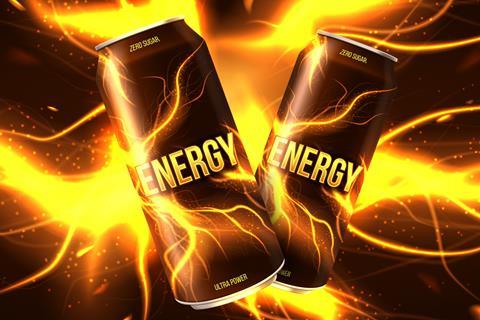
1. Stimulants is now the number one soft drinks segment in convenience
This summer c-stores are catching the buzz from super-charged energy drinks sales.
In fact, the hyper-caffeinated category has shaken off its lockdown jitters to outperform other soft drink stalwarts like colas and carbonates and hit the number one spot in chillers.
Straight from the start, energy drinks were a convenience-fuelled success story. And today’s Monster-guzzlers are staying loyal to their local stores. Figures show that stimulant value sales are up 23.7% in convenience, compared to around half that (14.4%) on the High Street [Circana, Convenience, Total Soft Drinks Britvic Defined, Value & Litres, 52WE 31/12/2023 vs. YA].
“We’ve seen an increase in shoppers buying energy drinks through independents and symbols,” confirms a Red Bull Spokesperson.
“Last year three million shoppers purchased an energy drink in the channel (+25% vs last year), making it a key category to focus on in 2024 [Kantar Worldpanel | OOH Panel | 52 weeks to 1 October 2023].”
Epsom-based retailer Sue Nithyanandan may personally prefer to get her energy fix from tea or coffee. But she’s seen first-hand the category’s sales potential out on the shop floor.
“There’s so many brands coming into the energy space now because it’s such big business,” she says. “There’s recently been so many activations with Lucozade, Monster and Red Bull.
“I find it’s the workers who buy it. For example, care workers will get their coffee and then an energy drink to go with it. Even the people that work from home buy it to perk them up, I suppose so they don’t fall asleep in front of the computer!”
Liam Cross, manager of Thatcher’s Spar in Dersingham, King’s Lynn, reckons that promotions are the key to keeping stimulation sales strong, especially in a relatively high-cost category.
“People are really going for the promotions at the moment,” he says.
“So when we’ve had Lucozade Alert in the cans for 99p they’re selling a lot better than normal. I just think customers are more promotions-driven than ever before. You’ve got big cans of Red Bull that can cost more than three pounds – and people aren’t willing to pay quite as much as that at the moment.”

2. Thirty-nine per cent of energy drinks shoppers are driven by flavour alone
As Sue notes, the category has been buoyed by a raft of flavour releases. This serves loyal shoppers something new to try while bringing in new consumers who might be put off by some original drinks’ slightly Marmite love-it-or-loathe-it taste.
“Flavours in energy now account for 31% of Stimulation sales [Cousins Davis U&A Research] and have shown a huge 28% growth year-on-year [Source Circana Total Market, S&I and Convenience NI 52 w/e value sales to 27/01/24], indicating there’s a significant thirst for a range of flavour variants that suit all tastes,” says Adrian Hipkiss, commercial director at Boost Drinks.
“Considering 39% of stimulation shoppers make their purchase based on flavour alone [Cousins Davis U&A Research], it’s vital to stock a wide variety of flavours to cater to this.”
Red Bull also cites how hot new flavours act as an entry point for shoppers into the energy category.
“Red Bull is a driving force behind flavours in the market and NPD has been largely incremental, with 45% of shoppers that bought into the flavoured Editions range being new to the brand [Kantar Combined Panel, Buyer Numbers vs YA, MAT 21.01.2024],” says a Redbull Spokesperson.
The spokesperson adds that the Editions range has speedily recruited shoppers, with seven-fold growth in two years. For this year, Red Bull plans to extend the run with brand-new Summer Edition Curuba Elderflower, plus Red Bull Pink Edition SugarFree.
Liam Cross says that currently his energy drink sales are steady, “but not selling as well as they once were.” He believes new flavours offer a welcome sales spike, however short-lived.
“For instance, the Monster Bad Apple that came out a couple of months ago absolutely flew off the shelves for us, but then slowed down again. I think that people lose interest pretty quickly.”
ADVERTISEMENT
![]()
Rubicon RAW has established itself as a must stock energy brand.
As the fastest growing big can energy brand1 it is outperforming the total market and delivering on shopper demand with 20% fruit juice, natural caffeine and B-vitamins. It’s also delivering over 10% more volume sales than its closest competitor2.
Rubicon RAW has sold more than 35 million cans since its launch in 20213 and brought in 700,000 consumers to the energy drink category in the past year alone4.
[1] Circana | All outlets | Stimulant | Fruit vs Non Fruit Unit Sales Last 52 wk ending 24 February 2024
[2] Kantar | 20 w/e 01 October 2023
[3] AG Barr Sales Data, Value Sales, Feb 2021 - Sept 2023, Total UK
[4] Kantar KPI 52 w/e May 2023
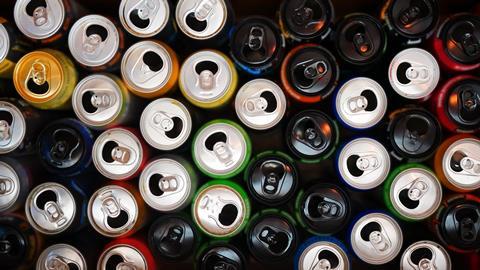
3. There’s plenty of competition – but still room for growth
Right now, energy drink brands can’t afford to slow down. With lots of market share out there to win they’re finding innovative ways to energise and excite consumers.
“The penetration [for energy drinks] isn’t huge,” says Reena Bilakhia – head of channel development at Britvic.
“But it’s driven by people who buy [the category] often. So the name of the game in energy is: how do we get more people buying into it and giving it a broader appeal?”
For Rockstar the solution is tapping into music. This April, it signed a partnership with Live Nation, which organises big-name events like the Reading, Leeds, Wireless and Parklife festivals.
“Where a lot of the brands are following extreme sports and things like that our passion point is music,” says Bilakhia.
“That’s a really broad platform where we can reach a lot more energy customers. The versatility of the campaign is that it can resonate with anybody who loves music.”
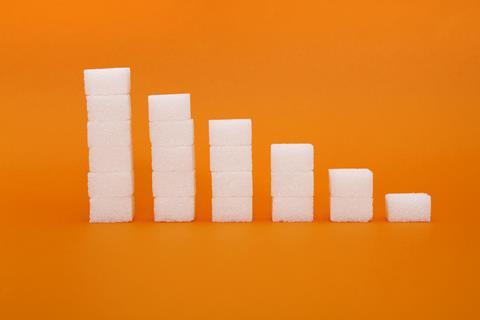
4. Customers are increasingly seeking ‘clean energy’
Another way brands can entice new customers to the category is through doubling down on health prompts.
More than a third (34%) of people who don’t currently consume energy drinks say there should be more natural alternatives available [Circana Convenience, Britvic Defined Soft Drinks, Value and Unit growth, YoY, 52WE 31.12.23]. That’s a big prize that’s fuelling healthy innovation across the segment.
Sue has been carefully watching the trend.
“It’s kind of a double message,” she says.
“People are combining energy with low calorie and ‘healthier’ messaging – but at the end of the day it’s always about caffeine.”
“Clean energy is becoming much more important to customers when they’re making a purchasing decision on sports and energy drinks,” says Chris Smith, partner brand manager at World of Sweets.
World of Sweets exclusively distributes Sneak Energy in the UK.
“[The] drinks contain natural caffeine, zero sugar, taurine, ginseng, choline and carnitine plus added B vitamins,” he says. “All combine to help deliver a boost that enhances mental focus and sharpness.”
This may connect with a fresh audience. But Smith is making sure it’s a hit with grassroots energy drink consumers too – with appearances at Comicon London in October.
In many ways the vogue for low and no-sugar drinks is mimicking the rest of the soft drink market’s move away from sugar.
“Shopper desire for low- and no-sugar soft drinks is continuing to grow,” says Matt Gouldsmith, channel director, wholesale at Suntory Beverage & Food GB&I.
“In fact, the low/no-calorie share of the soft drinks market is almost three times that of the regular segment with over 69% [Kantar Worldpanel | Combined Panel | Total Market | 52 weeks to 9th July 2023] of the volume share of the total market currently.
“We have continued to invest in drinks that cater to shopper desire for low- and no-sugar products within energy drinks, and recently we’ve seen Lucozade Zero value sales experience incredible 44% YOY growth [as before].”
Overall, the key takeaway seems to be that both ‘full-fat’ and zero-sugar energy drinks are essential stocks. That’s because while customers might be feeling virtuous on Monday, by Friday they could need that sugar hit to get them through to the weekend.
“Red Bull Sugarfree brings an older and more affluent shopper to the category [Kantar Worldpanel | Combined Panel | Total Market | 52 weeks to 9th July 2023] which is different in profile to the average energy drink shopper, so is key to catering to different shopper groups,” says a Red Bull spokesperson.
“Having full sugar and sugar-free options on shelf is important as increasingly shoppers are buying across both; last year 35% of shoppers bought both a full sugar and sugar-free energy drink (+3pts vs last year) [Kantar Combined Panel, Buyer numbers, MAT 24.12.2023],” they add.
ADVERTISEMENT
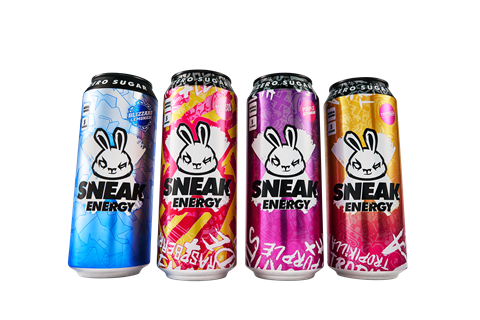
Sneak Energy is perfect for those who need a boost but don’t want to resort to something sugary. Natural caffeine, panax ginseng, taurine and choline combine with vitamins to support energy levels and give consumers that mental boost that can feel like a hack for your brain.
Established as the UK’s leading online energy drink brand, Sneak comes in 500ml and 330ml PMP cans in four mouth-watering flavours - Raspberry Lemonade, Tropikilla, Purple Storm and Blizzard Lemonade. With zero sugar, natural caffeine, natural flavours and just five calories per serving, Sneak is tailor-made for the 5 million Gen Z and Millennials actively seeking cleaner, benefit-driven, functional energy drinks.
Since its launch in March this year into convenience and forecourts through leading UK distributors World of Sweets, Sneak’s RTD range has grown to become worth over £500,000 at retail sales value*.
This Summer, the brand has launched its first out-of-home (OOH) campaign, “Hack Your Brain,”. Sneak will be showcased at major UK events and on billboards in key locations along with their first SkyTV advert this July. The brand will also appear at various music, gaming, and pop culture events, including university Freshers Weeks. The brand aims to reach 6 million consumers and sample its drinks to 100,000 individuals.
For more details and to stock up on Sneak Energy, visit sneakenergy.com/pages/become-a-sneak-stockist
*Source: World of Sweets internal sales data 04.07.24

5. Sports drinks was last year’s winning category, bringing £75.3m to convenience
Energy drinks may be the biggest category in convenience soft drinks – but sports drinks are the fastest-growing. Last year they sprinted ahead to claim a whopping 64.6% growth in value sales [Circana, Convenience, Total Soft Drinks Britvic Defined, Value & Litres, 52WE 31/12/2023 vs. YA].
Just as in energy, taste and value are important drivers.
“It’s essential that retailers stock a sports drink offering that takes the ‘taste’ and ‘value’ drivers into account to effectively maximise sales from impulse shoppers,” says Hipkiss.
“This also offers retailers a chance to connect with their core audiences, thereby enhancing sales rates to their maximum potential.”
In fact, if you squint both energy and sports drinks are getting to be quite similar. Lucozade has definitely been marketing them under the same banner, with ‘Blucozade’ bringing together Lucozade Sport Blue Force, Lucozade Energy Blue Burst and Lucozade Alert Blue Rush this February.
“There’s very much a blurring between sports and energy,” says Sue.
“That can be very confusing, it’s been on one of my lists to try and differentiate all this, even just in my mind!”
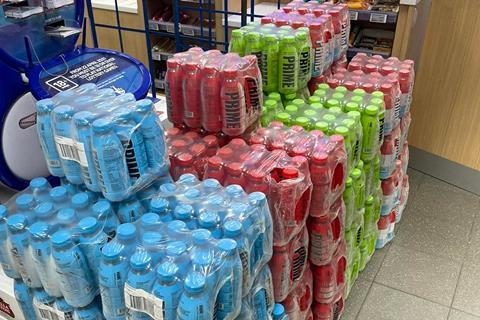
6. Prime has changed the game
For many retailers the post-Covid period was all about the craze for Prime. KSI and Logan Paul’s soft drinks juggernaut generated £55.7m in sales in 2023 [Circana Total Convenience, Total Soft Drinks, Value growth YoY, 52WE 31.12.23] and claimed 1.3% of soft drinks value in grocery, convenience and discounters [NielsenIQ RMS - Total Coverage Inc. Discounters, Total Soft Drinks, Value share of sales, Calendar year 2023 w/e 30.12.2023]. It’s also the reason sports drinks did so well in 2023.
For 2024 the hype might have died down (that share has dropped to 0.5% and is falling fast) [NielsenIQ RMS - Total Coverage Inc. Discounters, Total Soft Drinks, Value share of sales, Latest 12 weeks to 30.03.2024]. But it’s shown what’s possible in the functional drinks arena with the right blend of social media savvy and good old-fashioned branding.
Liam says that Prime Hydration did “amazingly well” – the store still stocks a couple of flavours – but that Prime Energy proved a flop.
“The only market that was really looking at Prime was kids. And because it was an energy drink with caffeine those kids couldn’t buy it!”
Maybe some big-name social media influencer is already striking a deal to produce the next Prime-style drink. Or perhaps lightning won’t strike twice.
But whatever happens, Sue thinks that its impact has made more mainstream drinks brands wake up and smell the sports drinks.
“I think when Prime did so well all the Monster and Lucozade people must have been waiting to see what that was all about,” she says.
“I think that’s why there’s so many new products out right now – they want to catch up.”

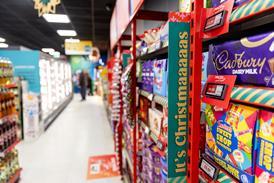







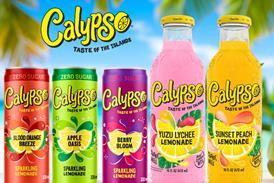



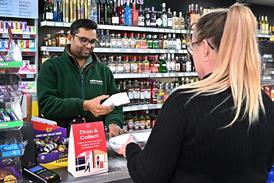







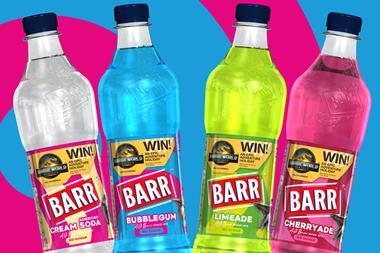
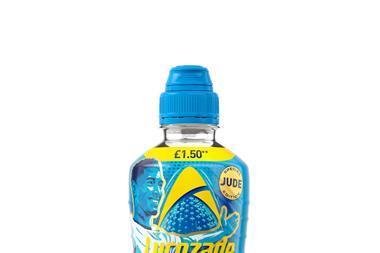
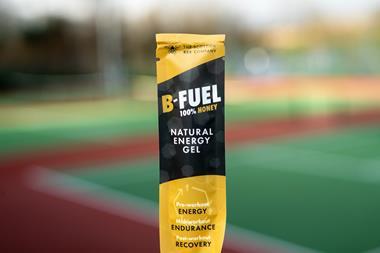

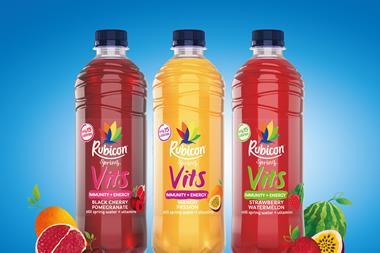






No comments yet